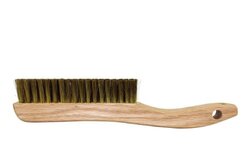All,
I am a first time pellet stove owner. We replaced our wood stove with a pellet stove because I was tired of stacking wood, cleaning up wood messes in the house, inconsistent house temps...etc. Anyways, we had our stove installed yesterday. I have watched the DVD included (it is now considered the owner's manual) and while the DVD did a good job discussing maintenance, I do not feel it really does a good job explaining the settings in detail (maybe a better way to look at what I want is trouble shooting the settings to get optimum performance to best utilize your pellets). I currently have the stove set in room temp mode with the room temp blower speed set in the middle. I have the feed rate set on 4 and the thermostat set to about 72. All the dvd stated was to make sure you have the correct feed rate....it only states to make sure no unburnt pellets are making it into the bin. If that is the case then you should turn your feed rate down. Other than that it really does not do a whole lot explaining the settings. What adjustments should I try in order to get the comfort I might desire while optimizing efficiency? I know you cannot tell me exact settings as every house is different but what settings should I play with? Thanks!
I am a first time pellet stove owner. We replaced our wood stove with a pellet stove because I was tired of stacking wood, cleaning up wood messes in the house, inconsistent house temps...etc. Anyways, we had our stove installed yesterday. I have watched the DVD included (it is now considered the owner's manual) and while the DVD did a good job discussing maintenance, I do not feel it really does a good job explaining the settings in detail (maybe a better way to look at what I want is trouble shooting the settings to get optimum performance to best utilize your pellets). I currently have the stove set in room temp mode with the room temp blower speed set in the middle. I have the feed rate set on 4 and the thermostat set to about 72. All the dvd stated was to make sure you have the correct feed rate....it only states to make sure no unburnt pellets are making it into the bin. If that is the case then you should turn your feed rate down. Other than that it really does not do a whole lot explaining the settings. What adjustments should I try in order to get the comfort I might desire while optimizing efficiency? I know you cannot tell me exact settings as every house is different but what settings should I play with? Thanks!



